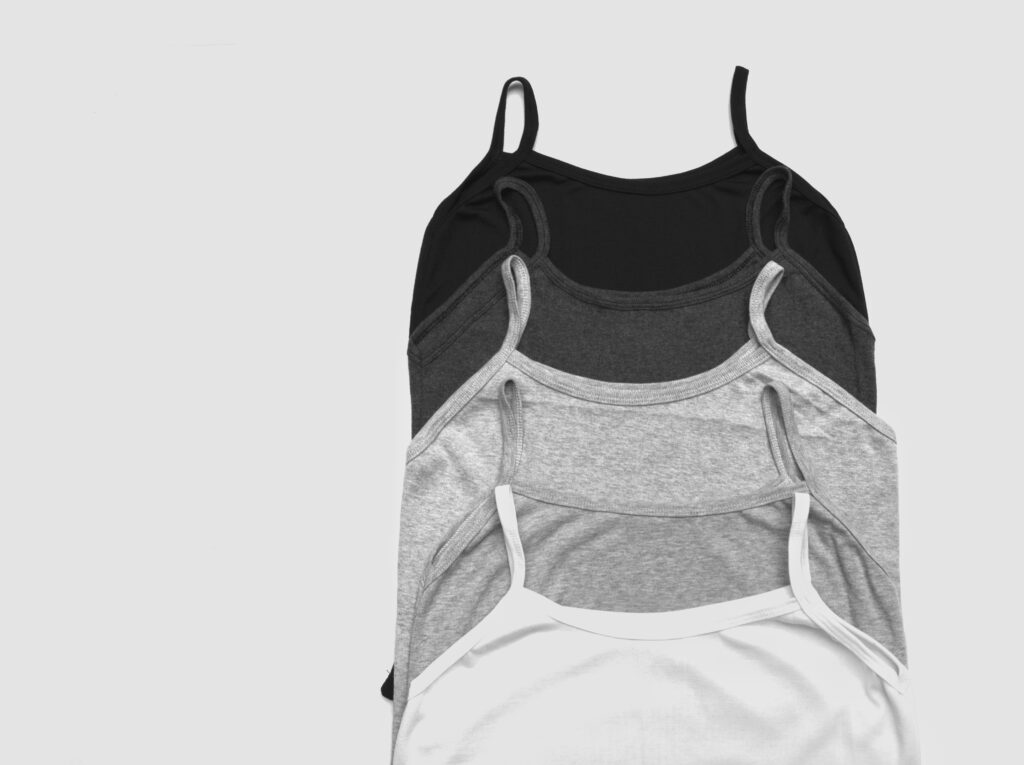
Have you ever wanted to experience the excitement and freedom of kayaking, but were deterred by the challenge of transporting and storing a traditional hard-shell kayak? Look no further! “Exploring the Waters: A Guide to Inflatable Sit-on-Top Kayaks” is your ultimate companion for discovering the world of kayaking with ease and convenience. Whether you’re a novice kayaker or an experienced paddler, this comprehensive guide will provide you with all the information you need to choose, use, and maintain an inflatable sit-on-top kayak. Say goodbye to heavy and cumbersome kayaks, and hello to unlimited water adventures!
1. Types of Inflatable Sit-on-Top Kayaks
1.1 Single vs. Tandem Kayaks
When it comes to inflatable sit-on-top kayaks, you have the option of choosing between single and tandem kayaks. Single kayaks are designed for solo paddlers and offer great maneuverability and agility in the water. Tandem kayaks, on the other hand, are built for two people and are perfect for enjoying a kayaking adventure with a friend or loved one. Tandem kayaks are generally longer and have a higher weight capacity to accommodate two passengers.
1.2 Fishing Kayaks
For those who enjoy angling, fishing kayaks are a fantastic option. These specialized kayaks come equipped with features specifically designed for fishing, such as rod holders, fish finders, and storage compartments for your gear. Inflatable fishing kayaks offer the added advantage of easy transportation and storage compared to traditional fishing kayaks.
1.3 Recreational Kayaks
Recreational kayaks are popular among beginners and casual kayakers looking for a fun and relaxing experience on the water. These kayaks are designed with stability in mind, making them perfect for calm rivers, lakes, and ponds. They generally have a wide and flat hull, providing a stable platform for paddlers of all skill levels.
1.4 Whitewater Kayaks
If you’re an adrenaline junkie looking for thrilling rapids and whitewater adventures, inflatable sit-on-top kayaks designed specifically for whitewater kayaking are the way to go. These kayaks are built to withstand the rough and turbulent conditions of fast-flowing rivers. They typically have a more streamlined and maneuverable design to navigate through the challenging whitewater environment.
1.5 Touring Kayaks
Touring kayaks, also known as expedition kayaks, are designed for long-distance paddling and multi-day trips on the water. These kayaks offer generous storage space for camping gear and provisions, allowing you to embark on unforgettable adventures exploring remote waterways. Inflatable touring kayaks provide the added benefit of easy transportation and storage when not in use.
2. Advantages of Inflatable Sit-on-Top Kayaks
2.1 Portability and Ease of Transportation
One of the biggest advantages of inflatable sit-on-top kayaks is their portability and ease of transportation. Unlike traditional hard-shell kayaks, inflatable kayaks can be deflated and packed into a compact carrying bag. This makes them convenient for those who don’t have a lot of storage space or who want to travel with their kayak. With an inflatable kayak, you can easily transport it in the trunk of your car, on public transportation, or even on an airplane.
2.2 Durability and Strength
Contrary to popular belief, inflatable kayaks are built to be durable and strong. They are constructed with high-quality materials that are puncture-resistant, ensuring that they can withstand accidental encounters with sharp objects in the water. Many inflatable kayaks are made with multiple air chambers, which provide added safety by ensuring that the kayak remains afloat even if one chamber gets punctured.
2.3 Stability and Safety
Inflatable sit-on-top kayaks are known for their excellent stability, which makes them ideal for beginners or those who may be nervous about balancing on a traditional kayak. The wide and flat hull design of inflatable kayaks offers a stable platform, allowing paddlers to feel confident and secure while on the water. Additionally, inflatable kayaks are often equipped with grab handles and safety ropes, providing extra stability and support.
2.4 Versatility and Adaptability
Another advantage of inflatable sit-on-top kayaks is their versatility. These kayaks can be used in a wide range of water conditions, from calm lakes to fast-flowing rivers. They are also suitable for various activities, such as fishing, recreational paddling, and even whitewater kayaking. The ability to adapt to different environments and activities makes inflatable kayaks a great investment for those who want to explore different waterways and pursue various water sports.
2.5 Cost-Effectiveness
Compared to traditional hard-shell kayaks, inflatable sit-on-top kayaks are generally more affordable. They offer a cost-effective alternative for those who want to experience kayaking without breaking the bank. Additionally, inflatable kayaks often come as complete packages, including paddles and pumps, saving you the extra expense of purchasing additional accessories.

3. Key Features to Consider
3.1 Materials and Fabrication
When choosing an inflatable sit-on-top kayak, it’s essential to consider the materials and construction used. Look for kayaks made from durable and puncture-resistant materials such as PVC or Hypalon. Pay attention to the seams and ensure they are reinforced and well-sealed to prevent any leakage or air loss.
3.2 Weight Capacity and Size
Consider the weight capacity of the kayak and verify that it can comfortably support your body weight and any additional gear you may bring along. It’s also important to consider the overall size of the kayak, especially if you have limited storage space. Keep in mind that larger kayaks may provide stability but can be more challenging to maneuver.
3.3 Storage and Portability
Evaluate the storage options of the kayak. Does it come with multiple storage compartments for your belongings? Is there a designated space for a cooler or fishing gear? Additionally, consider the ease of portability. Check if the kayak comes with a carrying bag or backpack, and if it can be comfortably carried by one person.
3.4 Comfort and Ergonomics
Comfort is a crucial factor, especially if you plan on spending extended periods on the water. Look for kayaks with adjustable seats and backrests to ensure proper support for your back. Padded seats and footrests can also enhance comfort during long paddling sessions.
3.5 Tracking and Maneuverability
Consider the tracking and maneuverability of the kayak. Some kayaks come with built-in skegs or tracking fins, which aid in maintaining a straight course and improve overall tracking ability. Maneuverability is also important, especially if you plan on navigating through narrow or winding waterways.
4. Maintenance and Care
4.1 Cleaning and Drying
After each use, it’s essential to clean your inflatable sit-on-top kayak thoroughly. Rinse off any sand, dirt, or debris with fresh water and use a mild detergent to remove any stubborn stains. Make sure to dry the kayak completely before storing it to prevent mold or mildew growth.
4.2 Storage and Protection
When not in use, store your inflatable kayak in a cool and dry place away from direct sunlight. UV rays can degrade the material over time. If possible, use a cover or protective bag to shield the kayak from dust and potential damage.
4.3 Patching and Repairs
Inflatable kayaks may occasionally develop leaks or punctures. In such cases, it’s important to be able to patch and repair them. Keep a repair kit handy that includes patches, adhesive, and a repair manual specific to your kayak model. Follow the instructions carefully when performing any repairs.
4.4 Inflation and Deflation Techniques
Master the art of inflating and deflating your kayak properly. Over-inflating can cause undue stress on the seams, while under-inflating can affect the kayak’s performance. Follow the manufacturer’s guidelines and use a reliable pump designed specifically for inflatable kayaks.
4.5 Regular Inspections
Regularly inspect your kayak for any signs of wear and tear, especially around the seams and air chambers. Check for any loose threads, small punctures, or signs of deterioration. Being proactive about maintenance and repairs will extend the lifespan of your inflatable sit-on-top kayak and keep you safe on the water.

5. Choosing the Right Paddle
5.1 Length and Materials
Choosing the right paddle is crucial for a comfortable and efficient kayaking experience. Consider the length of the paddle, which should correspond to your height and the width of the kayak. Shorter individuals and wider kayaks may require longer paddles, while taller individuals and narrower kayaks may need shorter paddles. Additionally, paddle materials, such as aluminum, fiberglass, or carbon fiber, can affect the weight and performance of the paddle.
5.2 Blade Shape and Size
Blade shape and size play a significant role in determining the efficiency and maneuverability of the paddle. Smaller blades are ideal for recreational kayaking and leisurely paddling, while larger blades provide more power and are suitable for faster paddling or challenging water conditions. Additionally, consider the shape of the blades; asymmetrical blades are designed to reduce torque and provide a smoother stroke.
5.3 Shaft Design and Grip
The shaft design and grip of the paddle can significantly impact your comfort and control. Some paddles offer adjustable shaft lengths, allowing you to customize it to your preferred paddling style. Look for ergonomic grip designs that reduce wrist fatigue and provide a secure hold, even when wet.
5.4 Feathering and Adjustable Options
Feathering refers to the angle at which the two blades of the paddle are offset from each other. Feathering can provide more efficient paddling by reducing wind resistance. Many paddles offer adjustable feathering options, allowing you to tailor the paddle to your specific needs and preferences.
5.5 Buoyancy and Floating Abilities
Accidents can happen, and a lost paddle can quickly spoil your kayaking experience. To mitigate the risk, consider paddles that offer buoyancy and floating abilities. Some paddles are designed with foam-filled shafts or blades that enable the paddle to float if accidentally dropped in the water.
6. Essential Safety Tips for Inflatable Sit-on-Top Kayaking
6.1 Wearing a Personal Flotation Device (PFD)
Always wear a properly fitting personal flotation device (PFD) while kayaking. PFDs are essential for your safety, providing buoyancy and potentially saving your life in case of an emergency. Ensure that the PFD is appropriate for your weight and size and meets the necessary safety standards.
6.2 Understanding Water Conditions and Hazards
Before embarking on any kayaking adventure, familiarize yourself with the water conditions and potential hazards in the area. This includes knowing the tides, currents, and weather forecast. Be aware of any underwater obstacles, rocks, or strong currents that could pose a risk to your safety.
6.3 Learning Basic Paddling Techniques
It’s important to learn and practice basic paddling techniques to ensure efficient and controlled movements on the water. Take the time to learn proper paddling strokes, turning techniques, and how to maneuver your kayak effectively. This will not only enhance your kayaking experience but also contribute to your safety on the water.
6.4 Mapping Out Your Route and Being Prepared
Before setting out on a kayaking trip, plan and map out your route. Familiarize yourself with potential launch and exit points, as well as any rest areas or facilities along the way. Let someone on land know about your plans and estimated return time for an added layer of safety.
6.5 Communicating and Staying Visible
Maintain good communication and visibility while kayaking. Use hand signals or verbal cues to communicate with other kayakers or boats in the vicinity. Consider wearing bright and reflective clothing, especially in low-light conditions, to ensure you are visible to other water users.

7. Popular Destinations for Inflatable Sit-on-Top Kayaking
7.1 Coastal Explorations
Inflatable sit-on-top kayaks open up a world of possibilities for coastal explorations. From picturesque shorelines to hidden caves and marine wildlife encounters, coastal kayaking offers a unique and breathtaking experience. Destinations such as Big Sur in California, the Florida Keys, and the Algarve region in Portugal are renowned for their stunning coastal landscapes and are perfect for inflatable sit-on-top kayaking adventures.
7.2 River Adventures
Rivers provide a diverse and exciting kayaking experience, from calm meandering rivers to challenging whitewater rapids. Whether you prefer a leisurely paddle or an adrenaline-filled adventure, there are numerous river destinations suitable for inflatable sit-on-top kayaking. The Colorado River in the United States, the Zambezi River in Africa, and the Waimakariri River in New Zealand are just a few examples of popular river kayaking destinations.
7.3 Lake Excursions
Lakes offer tranquil waters and scenic surroundings, making them ideal for recreational kayaking and leisurely exploration. From the Great Lakes in North America to the stunning lakes in the European Alps, the options are endless. Explore the crystal-clear waters of Lake Tahoe, immerse yourself in the beauty of Lake Como, or discover the hidden gems of Canada’s Banff National Park.
7.4 Outdoor Water Parks
For a family-friendly kayaking experience, outdoor water parks provide a fun and safe environment for all ages. Many water parks have designated areas for kayaking, allowing you to enjoy the thrill of paddling in a controlled environment. From water parks featuring artificial white water courses to inflatable obstacle courses, these destinations are perfect for a day of adventure and bonding with friends and family.
7.5 Remote and Isolated Waterways
For the adventurous souls seeking solitude and immersion in nature, exploring remote and isolated waterways is a dream come true. From the fjords of Norway to the untouched lakes of Patagonia, these destinations offer a sense of tranquility and serenity that is hard to find elsewhere. Keep in mind that venturing into remote areas requires thorough planning, sufficient supplies, and careful consideration of potential risks.
8. Accessories for Inflatable Sit-on-Top Kayaks
8.1 Kayak Seats and Backrests
Enhance your paddling comfort by investing in a kayak seat and backrest. These accessories provide additional lumbar support and comfort, especially during longer kayaking trips. Look for seats that are adjustable and easy to attach to your inflatable sit-on-top kayak.
8.2 Kayak Anchors and Trolleys
Kayak anchors and trolleys are useful accessories for fishing or when you want to stay in one spot without drifting. Anchors help keep your kayak stationary, while trolleys assist in dragging or transporting your kayak on land. These accessories can be valuable additions to your kayaking gear.
8.3 Kayak Paddles and Leashes
While inflatable sit-on-top kayaks often come with paddles, it’s worth considering an upgrade or having a spare paddle. Look for lightweight and durable paddles that are suitable for your paddling style. Additionally, paddle leashes are essential for keeping your paddle securely attached to your kayak, preventing loss or accidental drifting.
8.4 Kayak Carts and Wheels
Transporting your kayak from your vehicle to the water can be a strenuous task, especially if you’re alone or have limited strength. Kayak carts or wheels make this process much easier. These accessories allow you to roll your kayak effortlessly on land, saving your energy for an enjoyable paddling experience.
8.5 Kayak Storage and Transport Bags
To protect and store your inflatable sit-on-top kayak, consider investing in a dedicated storage or transport bag. These bags provide added protection against UV rays, dust, and moisture when your kayak is not in use. Look for bags that are specifically designed for inflatable kayaks and offer convenient carrying handles or backpack straps for easy transportation.
9. Tips for Repairing and Patching Inflatable Kayaks
9.1 Identifying Leak Sources
If you notice a loss of air pressure in your inflatable kayak, it’s essential to identify and locate the source of the leak. Inflate the kayak fully and listen for any hissing sounds or feel for escaping air. You can also apply a mixture of soap and water to the kayak and look for bubbles forming at specific spots.
9.2 Preparing the Kayak Surface
Before applying a patch, it’s crucial to prepare the surface of the kayak properly. Clean the area around the leak with mild soap and water, ensuring it is free from dirt, debris, or any residue. Dry the area thoroughly before proceeding to the next step.
9.3 Applying the Patch and Adhesive
Apply a suitable adhesive to the patch and the kayak surface according to the manufacturer’s instructions. Press the patch firmly onto the leak area, ensuring it adheres completely and without any air bubbles. Use gentle pressure and allow the adhesive to bond securely.
9.4 Curing and Rechecking for Leaks
Allow sufficient time for the adhesive to cure and bond before inflating the kayak again. Once cured, reinflate the kayak and inspect the repaired area for any signs of new leaks. Applying a soapy water mixture can help you identify any additional leaks that may require patching.
9.5 Final Inspection and Testing
After completing the repair process, give your kayak a final inspection to ensure all leaks are properly patched and the kayak is holding air pressure reliably. Test the integrity of the repaired area by inflating the kayak fully and leaving it for a few hours to observe if there is any air loss.
10. Frequently Asked Questions (FAQs)
10.1 Are inflatable sit-on-top kayaks suitable for beginners?
Yes, inflatable sit-on-top kayaks are excellent choices for beginners. They offer stability, ease of use, and often come equipped with safety features. Their durability and versatility make them ideal for learning basic paddling skills and building confidence on the water.
10.2 Can inflatable sit-on-top kayaks be used for fishing?
Absolutely! Inflatable sit-on-top kayaks can be used for fishing. They offer stability, ample storage space, and often come equipped with fishing-specific features such as rod holders and attachment points for additional gear.
10.3 How do inflatable sit-on-top kayaks compare to hard-shell kayaks?
Inflatable sit-on-top kayaks have several advantages over hard-shell kayaks. They are more portable, easier to store, and often more affordable. While hard-shell kayaks may offer slightly better performance and speed in the water, inflatable kayaks provide excellent stability, durability, and versatility.
10.4 What safety precautions should I take while using an inflatable kayak?
It’s important to always wear a personal flotation device (PFD) and follow basic water safety guidelines. Familiarize yourself with the water conditions, wear appropriate clothing, and communicate with other water users. Be aware of your limitations and understand your kayak’s weight capacity to ensure a safe and enjoyable kayaking experience.
10.5 How do I clean and store an inflatable sit-on-top kayak?
To clean your inflatable sit-on-top kayak, rinse it with fresh water after each use to remove dirt, sand, or saltwater. Use a mild detergent if necessary to remove any stubborn stains or grime. Before storing, ensure the kayak is completely dry to prevent mold or mildew growth. Store it in a cool and dry place protected from direct sunlight, and consider using a cover or protective bag to shield it from dust and potential damage.







